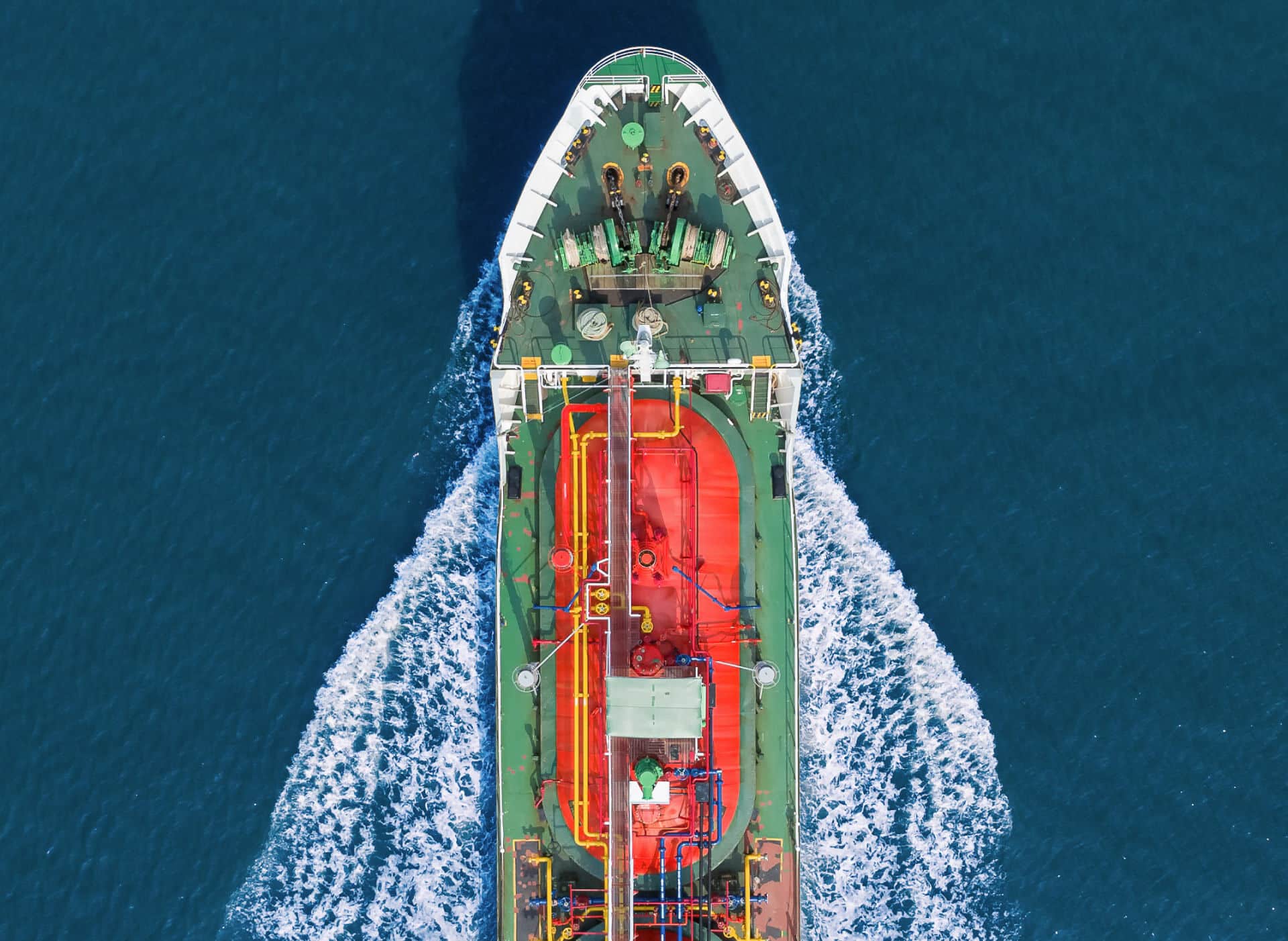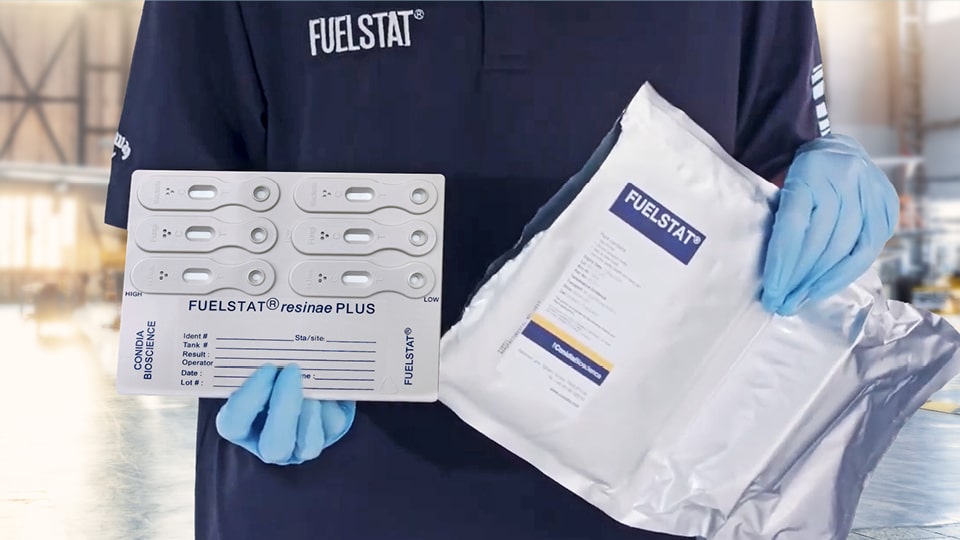https://shipmanagementinternational.com/do-imo-2020-and-covid-19-make-a-perfect-storm-for-marine-operators/: published 17th November 2020
Why would we link IMO 2020, a regulation to reduce sulphur in marine fuels, and a virus that has created a global pandemic unlike any other in modern times? The answer is because they combine to create an unprecedented risk of microbial contamination in the marine industry.

Pierre Poitras, Technical Consultant, Conidia Bioscience
Marine fuel testing for microbial contamination is not well mandated. But should operators be concerned? The combination of reduced sulphur in the fuel and the effects of the pandemic has created a unique situation whereby vessels lay idle, fuel consumption has dropped, supplies are more hygroscopic as traces of bio-content enter bio-free fuels as a result of the complex global fuel supply network, making them more susceptible to infection. Furthermore, in 2017, ISO 8217 6th edition allowed additional MGO grades: DFA, DFZ and DFB with a maximum Fatty Acid Methyl Esters (FAME) content of 7.0 v/v %, another potential facilitator of water content and microbial infection.
Without water in the fuel, microorganisms do not have the necessary environmental conditions to thrive. No matter what type of marine application, however, whether a cruise vessel, tanker or offshore platform, there is simply no getting away from moist environments and some water getting into the system. Heavier than fuel, water will sink to the bottom of the fuel tank and create an environment for organisms to grow.



Microbial contamination covers multiple types of organisms, including bacteria, mould and yeast, the presence of which will vary according to individual site conditions based on factors including temperature and humidity. The lead organism is most often Hormoconis resinae (H.res), which has a filamentous (long stranded) fungi structure. This acts as a binding material for other micro-organisms to cling to which results in the formation of layers of biomass in the fuel. This can block filters and fuel lines, adding to maintenance activities, costs, and risks to safety. Furthermore, these biomass layers generate organic acids that pit corrode the metal surfaces they touch and adhere to, causing damage to fuel tanks and other ancillary equipment. If left untreated, this can lead to costly damage to systems, breakdowns while at sea, and vessels being out of service for several days, weeks or even months.
The impact of COVID-19
The COVID-19 pandemic has created a highly unusual situation whereby many marine vessels have been out of service. This is particularly true for cruise ships, but other sectors have also been affected. The drop in the price of oil has left tankers floating in international waters, for example, waiting for an increase in demand and the right trading conditions. While normal operations are suspended and vessels inactive, two unwanted scenarios are created: The first is that organisms are given the opportunity to grow in the fuel tanks without being disturbed. The second problem is the lower demand for fuel, with sea-going vessels only using around 10% of their normal capacity and cruise ships completely stationary. This means that a lot of marine fuel is in long-term storage, again allowing organisms to thrive.
Biofuels add to the mix
As the marine industry looks for ways to reduce its environmental impact in terms of greenhouse gases, there is a lot of discussion about increasing bio content blending in 2nd generation renewable and sustainable marine residual fuels such as Very Low Sulphur Fuel Oils (VLSFO). This adds to the potential issues of contamination by providing organisms with organic matter to feed off and keeping water in the fuel in suspension for longer, meaning organisms can exist in other parts of the fuel system.



Chain of custody
The exact composition and quality of marine fuels are not the same in any two parts of the world and they are often stored in different ways in different countries. A busy port with high throughput of fuel presents a relatively low risk of contaminated fuel. A port with lower throughput without the right testing routine in place, presents a much higher risk.
If fuel testing is not being carried out, there is no chain of custody. A cruise ship heading out to sea, for example, will have no recourse if it encounters fuel contamination issues. These issues could result in problems with engines, affecting air conditioning and refrigeration onboard the vessel – a situation no cruise operator wants to experience with a ship full of passengers. If, however, testing is carried out during bunkering, the impact of contamination can at least be mitigated using chemicals.
OEMs are starting to take the issue of microbial contamination seriously, requiring operators to test fuels, with some even adding test kits to their parts lists. While vessel owners may not think fuel testing is their responsibility, the routes of recourse should they encounter problems are diminishing, so why would they take the risk?
The right sort of testing
One of the problems with testing fuel samples is that the living organisms in the sample are likely to die if tests are not carried out expediently. Indeed, ASTM D6469-20 is the standard guide for microbial contamination in fuels and fuel systems. It states that if carrying out microbiological testing, a fuel sample should ideally be tested within minutes or transported in a controlled environment to a laboratory and tested within a maximum of 24 hours as the conditions of the sample may have changed, in other words the organisms may have perished. While the onboard/on-site technician may see black slime clogging filters and other equipment in the fuel system, by the time the sample reaches the laboratory and is tested, a lab result may say there is no contamination and, as such, is pointless.



Testing of marine fuels can be a painless, low cost and simple exercise. Immunoassay test kits, such as FUELSTAT® from Conidia Bioscience, offer an onsite alternative to laboratory testing for the earliest possible detection of microbiological contamination and easiest way of maintaining both chain of custody, and adherence to ASTM D6469-20. Immunoassays have long been used in the medical industry to provide quick and accurate testing for the detection of specific molecules, such as those currently being used in many parts of the world to provide rapid indication of COVID-19 infection. Similarly, FUELSTAT® uses antibodies to detect only the known, and specific, microorganisms which can degrade fuel. Unlike many more traditional testing methods it does not therefore detect the presence of other, non-harmful organisms such as human bacteria which may have cross contaminated the fuel sample due to environmental or sampling factors. This means you only act upon microorganisms which are far more likely to impact the fuel and fuel systems, and not the white noise.
Without this simple, low cost testing, vessels run the risk of failure while out at sea, especially as they start work again after longer periods of inactivity than usual. This could result in enormous costs associated with getting the vessel back to port, repairs, and even liabilities if unable to complete a contract. Furthermore, routine testing of fuel removes the need for unnecessary, costly maintenance and chemicals if the operator is confident there is no contamination present.
A valuable source of data
For fleet operators, having an accurate, reliable results for fuel testing can provide them with a clearer understanding of the vulnerability of their vessels to microbial contamination. Test results from onsite test kits can be added to central databases within a matter of minutes, supporting more effective maintenance management and knowledge of bunkering hotspots for contamination.
Find out more: FUELSTAT® Result & Report
Summary
While fuel testing is not a mandatory requirement within the marine industry, the right sort of testing could save a lot of time and money. Microbial contamination can grow quickly in short time periods but, because of the effects of the pandemic, the risks it presents are higher than ever. The technology to test quickly, simply, and accurately is available for an incredibly small cost without the need to send samples to onshore laboratories. Would it not make sense, therefore, for all parties in the chain of custody for marine fuel to adopt a robust testing strategy for complete peace of mind?
If you would like to find out more about the issues surrounding microbiological contamination, then see here:
